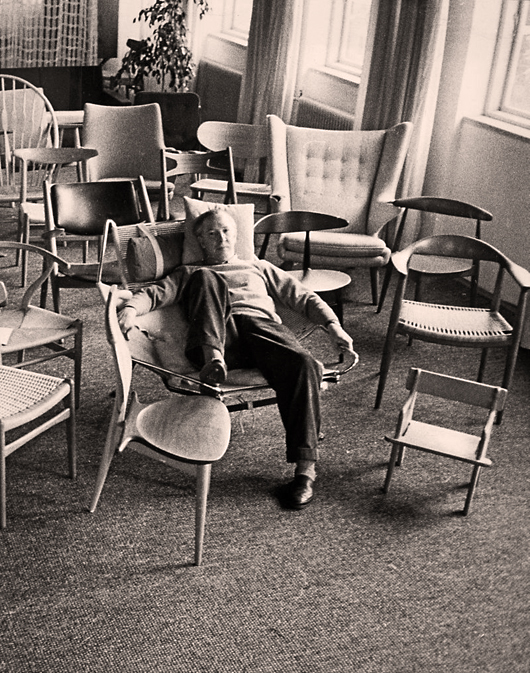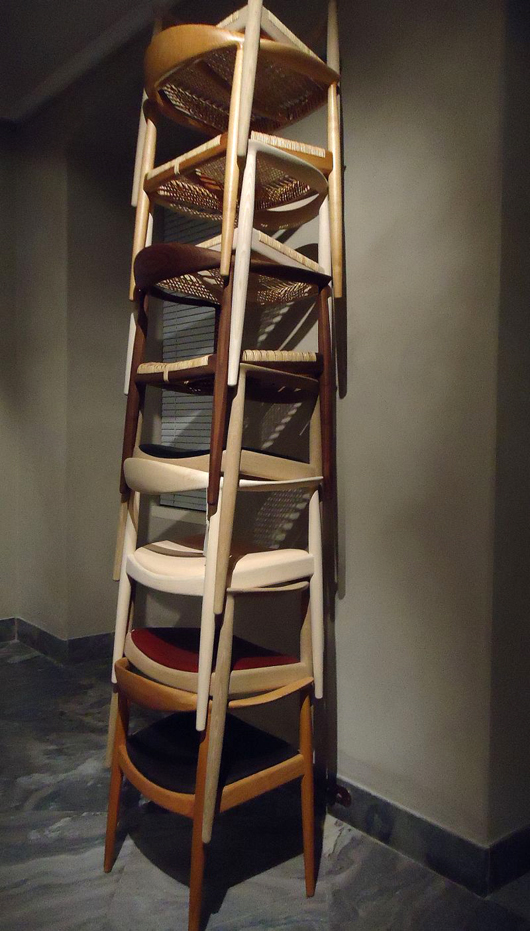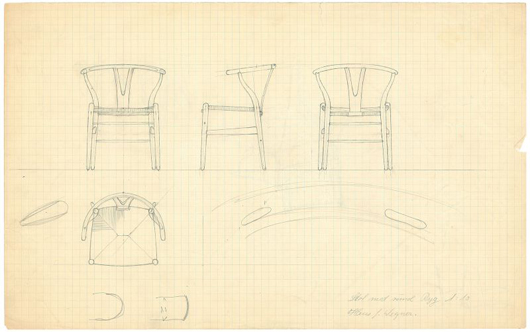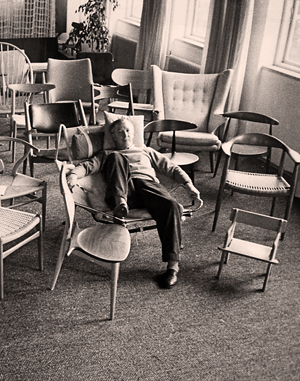
SAXONY, Germany – Mass-produced furniture before 1950 had a tendency to be dark, ponderous and often uncomfortable. But in 1949 one man’s personal search for comfortable, well-designed seating resulted in a sensation that changed what everyone wanted in their living rooms.
“Just One Good Chair,” documents designer Hans J. Wegner’s search for the perfect place to sit. This extensive exhibit at Design Museum Denmark in Copenhagen is on display through Dec. 7, and worthy of a trip from nearby Germany for all Danish Modern enthusiasts.
Even as a student at the Danish Furniture School, Wegner’s brilliance was combining streamlined shapes with a perfect balance of form. His drawing for a set of silverware, unadorned and with a simple tapering at the top and bottom of each utensil, hinted at his future style.
There was a moment when everyone at school marveled over a curve-backed wooden chair from China, made with no nails or glue. This moment was breakthrough for Wegner, who later experimented with curved-back forms, as well as a Windsor-based design he called “Peacock Chair.”
Wegner’s modernism was inspired by simple tools humans have used for centuries. One only need say “boat paddle” to really understand the flaring and narrowing of the wooden arms of his chairs, “spear” to define their tapering, pointed legs.
When Wegner’s new design for a chair appeared at the Cabinetmakers Guild Exhibition in Copenhagen in 1949, it was the antithesis of traditional furniture. Appearing light in weight because of its open-backed design and light in color due to its natural wood, “The Round One” as Wegner referred to it, was refreshingly spare, yet comfortable.
Interiors magazine published an article on “The Chair” in 1950, and America went crazy for the new style. The Chair was launched it into mass production, nervously supervised by Wegner to ensure quality of craftsmanship was not compromised. The style became so popular that CBS bought Wegner chairs for the televised Nixon-Kennedy presidential debates.
Wegner never stopped pushing his idea of creating the perfect chair, designing more than 500 seating options and continuing to make them larger, more aesthetically pleasing and more comfortable. Although Wegner died in 2007, his work continues to inspire designers. It is also highly collectible. Depending on age, materials and condition, you can expect to pay upwards of 800 euros ($1,000) for one of his simple chairs.
Design Museum Denmark’s exhibit displays so many of the design highlights of Wegner’s very productive life. And unlike many such exhibits, you can actually sit in some of the chairs.
If you do venture to Denmark, the Fuglsang Kunstmuseum situated in the wildly remote landscape of the island of Lolland is not to be missed. It showcases an excellent overview of Danish art history, with masterworks by P.C. Skovgaard and Anna Ancher. The white cube-like building designed by British architect Tony Fretton is, itself, a part of the artwork. A special room designed with glass walls looks like three paintings, but it is actually a framed view of an ever-changing landscape of stormy skies and lazily moving sheep.
For information on both museums please see www.FuglsangKunstMuseum.dk and www.DesignMueseum.dk
Upcoming Auctions
Oct. 15-18: Bassenge Buchauktionen, Berlin. Valuable books, autographs, modern literature and art documentation. www.Bassenge.com
Oct. 17-18: Schwarzenbach Auktion Zurich presents stamps and postcards from Liechtenstein, Germany, Switzerland and West Europe, including special collections on the history of flight. www.Schwarzenbach-Aution.ch
Oct. 21-23: Dorotheum, Vienna. Old Master paitings, antique furniture and acessories, jewels. www.Dorotheum.com
Oct. 23-25: Leipziger Münzhandlung & Auktion Heidrun Höhn combines their September and December sales into one enormous Autumn auction. Fine gold and silver coins and medals from Germany form the bulk of the sale, with interesting additions from Austria and the Czech Republic, as well as antiquities, paper money, stock shares, and antique maps. www.Leipziger-Muenzhandlung.de
Nov. 11-13: Quittenbaum Kunstauktionen, Munich: Art Nouveau & Art Déco; Private Collection Richard Riemerschmid; Bohemian glass by the Elisabeth glassworks. www.Quittenbaum.de
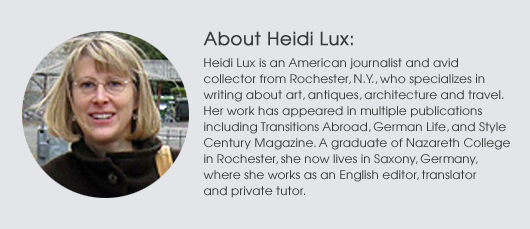
ADDITIONAL IMAGES OF NOTE
